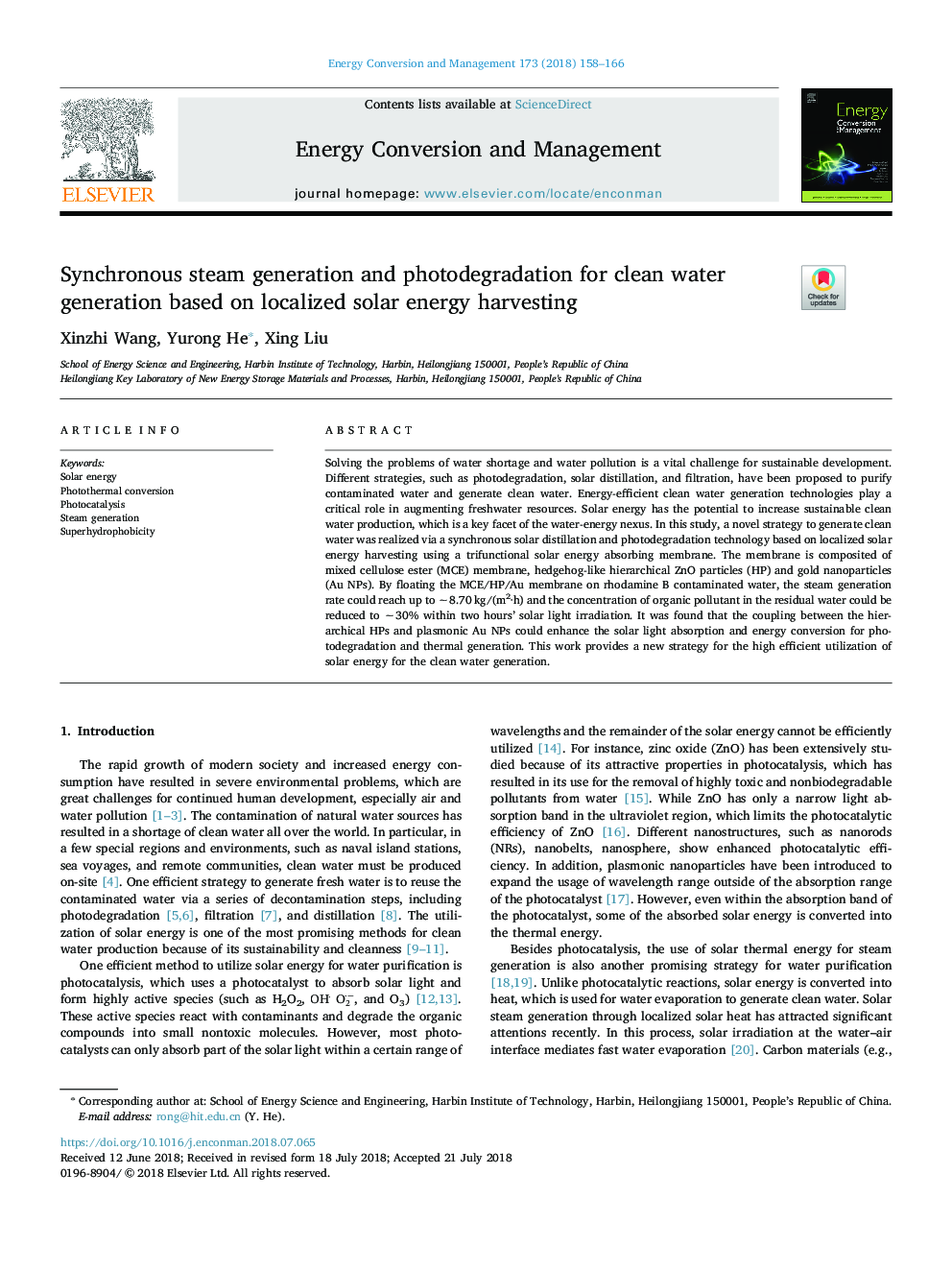| Article ID | Journal | Published Year | Pages | File Type |
|---|---|---|---|---|
| 7157834 | Energy Conversion and Management | 2018 | 9 Pages |
Abstract
Solving the problems of water shortage and water pollution is a vital challenge for sustainable development. Different strategies, such as photodegradation, solar distillation, and filtration, have been proposed to purify contaminated water and generate clean water. Energy-efficient clean water generation technologies play a critical role in augmenting freshwater resources. Solar energy has the potential to increase sustainable clean water production, which is a key facet of the water-energy nexus. In this study, a novel strategy to generate clean water was realized via a synchronous solar distillation and photodegradation technology based on localized solar energy harvesting using a trifunctional solar energy absorbing membrane. The membrane is composited of mixed cellulose ester (MCE) membrane, hedgehog-like hierarchical ZnO particles (HP) and gold nanoparticles (Au NPs). By floating the MCE/HP/Au membrane on rhodamine B contaminated water, the steam generation rate could reach up to â¼8.70â¯kg/(m2·h) and the concentration of organic pollutant in the residual water could be reduced to â¼30% within two hours' solar light irradiation. It was found that the coupling between the hierarchical HPs and plasmonic Au NPs could enhance the solar light absorption and energy conversion for photodegradation and thermal generation. This work provides a new strategy for the high efficient utilization of solar energy for the clean water generation.
Related Topics
Physical Sciences and Engineering
Energy
Energy (General)
Authors
Xinzhi Wang, Yurong He, Xing Liu,
